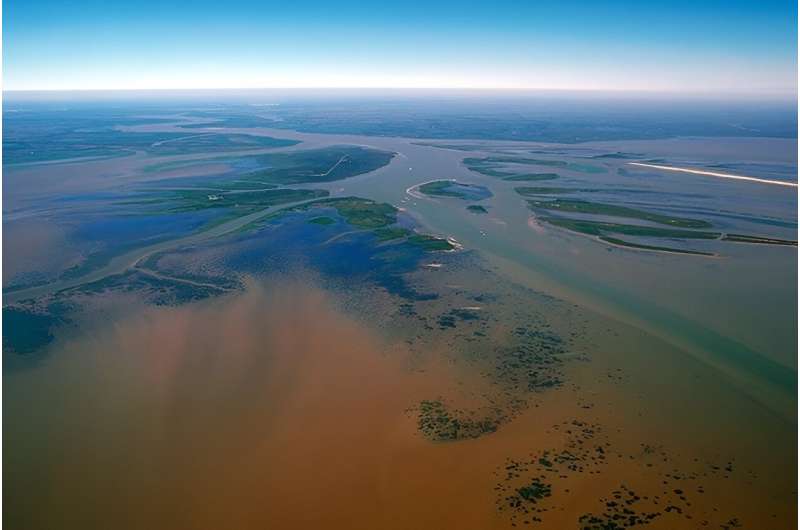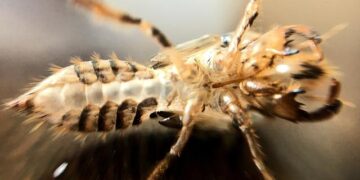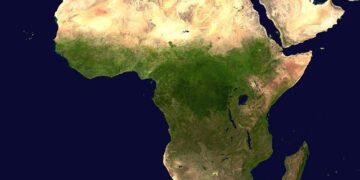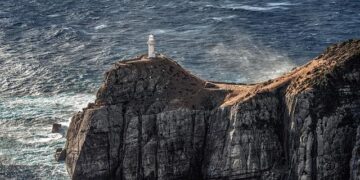
ORNL scientists study the complex processes going on in coastal ecosystems such as the Atchafalaya Basin, depicted here, to better represent these valuable environments in the nation’s predictive land models. Credit: U.S. Army Corps of Engineers
In the wet, muddy places where America’s rivers and lands meet the sea, scientists from the Department of Energy’s Oak Ridge National Laboratory are unearthing clues to better understand how these vital landscapes are evolving under climate change.
Around 40% of the nation’s population live in coastal counties. The coasts are a linchpin of the economy, hosting the nation’s ports, key energy infrastructure, fisheries and tourism centers, producing $10 trillion in goods and services a year.
Coastal wetlands serve as an effective barrier to absorb flooding impacts and guard against property damage. However, severe storms, chronic sea level rise and increasing infrastructure, plus other stressors present unique challenges for coastal ecosystems.
ORNL researchers gather and analyze data about how water, soils, plants and microbes interact and influence the cycling of carbon and nutrients in these environments.
They collect samples in biomes as varied as the coastal marshes of Louisiana, the mangrove swamps of Texas and the coastal wetlands of the Chesapeake Bay and Lake Erie. Their goal is to improve the nation’s premier Earth system simulations that help decision-makers prepare for the future.
Elizabeth Herndon, senior staff scientist in ORNL’s Environmental Sciences Division, is leading a project examining how water level fluctuations along the Louisiana coastline translate into changes in biogeochemical processes, or the natural cycles of life, earth and chemistry in the environment.
The study involves two sites—one in which a delta is actively growing after part of a river was diverted to reduce urban flooding. The other site is where land is submerging as the sediment supply has been cut off, with soils increasingly inundated and subject to salinization—where soluble salts accumulate—from sea level rise.
The research is part of Herndon’s DOE Early Career Award project focused on how flooding by freshwater and seawater affect interactions between the nutrient phosphate and the elements iron and manganese in coastal ecosystems. The findings will improve predictive modeling capabilities.
Herndon, an environmental geochemist, is working with colleagues to measure and collect water and soil data at the sites. They aim to analyze how flooding and drainage influence environmental conditions—including pH levels, soil moisture, and, most importantly, the system’s redox processes, or reduction-oxidation reactions, which govern chemical transformations in the ecosystem.
In addition to hands-on sampling, the scientists have installed environmental sensors to collect near-real-time data.
“Our goal is to get a sense of the composition of the soil and water, which can point us to important processes happening at the sites as the ecosystem evolves,” Herndon said.
By understanding how these biogeochemical processes vary over space and time, the scientists can pinpoint how the system is dealing with changes such as an influx of phosphorous from the Mississippi River. Phosphorous is a major nutrient for plants and microbes, and it is abundant in the areas Herndon is studying because of fertilizer and industrial runoff.
Whether phosphorous is retained in coastal soils or swept out to sea can influence events like algal blooms and dead zones in the Gulf of Mexico. How the nutrient cycles through the ecosystem is largely guided by redox variability—the balance of reduction, or gaining electrons, and oxidation, or losing electrons, among different substances.
When soils are saturated, for example, electrons from decomposing organic matter are transferred to iron oxides instead of oxygen gas, causing the minerals to dissolve and release bound phosphate. Soil drainage reintroduces oxygen gas that reacts with dissolved iron to reform the iron oxides and capture phosphate.
This variability influences the availability of nutrients and energy for organisms, which can affect growth and survival. Redox variability has been underrepresented in land system models, Herndon said.
“We’re generating new knowledge of these systems, where we currently don’t have a lot of geochemical understanding of what’s driving some of the carbon fluxes and other ecosystem processes,” Herndon said.
“We’re digging into what’s happening in the soil that might be influencing plant communities or greenhouse gas fluxes from the system.” By working with colleagues on the modeling side, the scientists use those observations and measurements to inform model development.
Adding the missing piece in Earth-sized simulations
Teri O’Meara, an ORNL environmental scientist with a joint appointment through the Smithsonian Environmental Research Center, is collaborating on several projects to better understand the connections between vegetation dynamics and biogeochemical cycling in response to human-induced changes in coastal ecosystems.
In a large, multi-lab DOE project called Coastal Observations, Mechanisms and Predictions Across Systems and Scales, or COMPASS, O’Meara collaborates with modelers and field scientists as a theme co-lead analyzing how drivers such as flooding affect coastal areas.
In one COMPASS experiment, scientists are simulating an environment in Maryland in which forested plots are intermittently flooded with freshwater or saltwater to mimic storm events to understand carbon cycling and tree and plant survival in coastal ecosystems.
O’Meara is also working with the Smithsonian Environmental Research Center and DOE partners in the Salt March Accretion Response to Temperature Experiment, or SMARTX project, a whole-ecosystem active warming experiment in the Chesapeake Bay that’s dedicated to studying the effects of warming on carbon cycling.
The project has found that coastal wetland methane emissions greatly increase with warming, driven by both biogeochemical and plant trait mechanisms. In another Smithsonian-DOE project, Greenhouse Gas Emissions Nexus, or GENX, scientists are using automated methane chambers to quantify rates of decomposition pathways that regulate methane emissions across different time scales.
“Before the coastal ecology projects we’re collaborating on, there was very little detail about lateral transport of water and sediment incorporated in our land surface models. So, the coastline was inadequately described in our Earth system simulations,” O’Meara said.
“We want to understand the carbon capture and storage potential of these ecosystems and how that can change over time. For instance, plants can trap sediment, which then changes the land’s elevation and in turn alters subsurface biogeochemistry.
“(Coastlines) are one of the most impacted ecosystems,” she added.
“We need the services they provide, but they’re also being pressured by development on land and environmental stress from the oceans. There’s dredging and other measures that can change the sediment supply. There’s sea level rise, and there are temperature changes that influence the vegetation that stabilizes the system. All of these things are happening simultaneously, and it’s impossible to measure everything.”
“So, if we can gain an understanding of the underlying processes at play within the ecosystem, then we can put that in a model and have those processes interact with each other to analyze their influence on survival of the coast, and what we could potentially do to improve resilience to change,” O’Meara said.
Scaling the tiniest element to global impact
The data collected in these projects across different scales, from the microbial life in soils to large-scale ecosystem reactions, are essential to better understand and model Earth-scale land processes.
That’s where ORNL scientist Benjamin Sulman steps in. He is using a suite of biogeochemical and other models to scale these processes and integrate them into the land model of the larger DOE Energy Exascale Earth System Model, or E3SM. The E3SM is an essential capability to understand and predict how the Earth will change in the years ahead under a warming climate.
Sulman’s work to integrate coastal wetland processes in the E3SM Land Model is the subject of his own DOE Early Career Award, drawing on his expertise in modeling biogeochemical cycles and plant-soil interactions.
He’s leading efforts to connect simulations of redox chemistry, tidal hydrology and coastal wetland plant functional types such as salt marsh grasses and mangroves into land model simulations at ecosystem to continental scales.
“What makes these ecosystems so interesting is that they sit at a lot of interfaces between land and water and between freshwater and saltwater,” Sulman said.
“Because of that, they are very dynamic compared to other systems that we might examine. We can see big changes hour-to-hour in the hydrology and biogeochemistry of the coastal system. That’s why they are such hotspots for biogeochemical cycling.”
Coastal areas can store a lot of carbon because they host fast-growing plants, with resulting organic matter buried in sediments—but they can also emit a lot of greenhouse gases such as methane and nitrous oxide that are produced in flooded soils, Sulman added.
Tidal fluctuations can input salt or freshwater into the system, so there can be tremendous variability at these interfaces. The scientists found when the ecosystems are more salt-influenced, the sulfate cycle tends to overwhelm other elemental cycles, and that feeds into greenhouse gas production, Sulman said.
Lateral transport of water, nutrients and carbon across wetland landscapes can be an important control on coastal carbon and nutrient balance, and ORNL is leveraging the Advanced Terrestrial Simulator, or ATS, to represent that element.
Developed by ORNL and other national laboratories, ATS is a sophisticated model of surface and subsurface flow and transport to better simulate the role of lateral exchanges in coastal systems. Coupling ATS to the E3SM Land Model allows interactions between plants, water flows and subsurface biogeochemistry to be resolved to answer questions that cannot be addressed with simpler models, Sulman said.
“The magnitude of coastal change can be seen in some of the field work ORNL staff is doing today,” he said. “Beth [Herndon] is working on an island in the Mississippi Delta that didn’t exist 50 years ago” as the land shifts. “And if you look at maps of predicted sea level rise, there are a lot of areas along the coast that might not exist 20 to 30 years from now.”
By representing these complex coastal processes, you get an improved representation of the carbon balance in the E3SM Land Model, Sulman said.
Sulman, O’Meara and colleagues reached a milestone recently when they successfully integrated redox reactions and other key coastal ecosystem processes using a biogeochemical model called PFLOTRAN, as detailed inJournal of Geophysical Research: Biogeosciences. They then demonstrated how coastal processes can be connected into the E3SM Land Model, as detailed in the Journal of Advances in Modeling Earth Systems.
Improving models with more frequent observations
The scientists integrated complex biogeochemical processes into the Earth Land Model, simulating interactions between sulfur, iron and carbon cycling and how they respond to salinity, Sulman said.
The researchers also built in plant photosynthetic responses to salinity. By including more frequent observations associated with tides and photosynthesis, the team found they can more clearly analyze changes that significantly influence soil nutrient cycling.
While the work focused on data from Maryland and Massachusetts coastal areas, Sulman said he’s now working with Herndon to conduct similar modeling with data from her Louisiana sites.
In the longer term, Sulman expects to go from evaluating the model at single sites to running simulations across larger gradients of climate and salinity to get at answers for entire regions.
In a related project, part of ORNL’s collaboration in the DOE Southeast Texas Urban Integrated Field Laboratory, Sulman is working with colleagues to simulate wetlands to evaluate the potential impact of salt marsh restoration activities on carbon storage and greenhouse gas fluxes. Projects such as these could be part of larger regional flood management plans, he added.
The work to better represent these evolving ecosystems is ongoing. Herndon recently co-led a DOE workshop on coastal ecology research, bringing together scientists from across the country to discuss knowledge gaps and research priorities going forward.
“(Coastal ecosystems) are both ecologically important and ecologically threatened,” Sulman said. “A lot of the things we depend on in these areas, like fisheries, port systems and wetlands that defend against flooding depend on intact coastal ecosystems.”
By better representing the complex interactions going on in these environments in predictive models, scientists can evaluate potential remedies to ensure infrastructure and natural resource resilience.
More information:
Benjamin N. Sulman et al, Integrating Tide‐Driven Wetland Soil Redox and Biogeochemical Interactions Into a Land Surface Model, Journal of Advances in Modeling Earth Systems (2024). DOI: 10.1029/2023MS004002
T. A. O’Meara et al, Developing a Redox Network for Coastal Saltmarsh Systems in the PFLOTRAN Reaction Model, Journal of Geophysical Research: Biogeosciences (2024). DOI: 10.1029/2023JG007633
Citation:
Along shifting coastlines, scientists bring the future into focus (2024, July 13)
retrieved 14 July 2024
from https://phys.org/news/2024-07-shifting-coastlines-scientists-future-focus.html
This document is subject to copyright. Apart from any fair dealing for the purpose of private study or research, no
part may be reproduced without the written permission. The content is provided for information purposes only.
>>> Read full article>>>
Copyright for syndicated content belongs to the linked Source : Phys.org – https://phys.org/news/2024-07-shifting-coastlines-scientists-future-focus.html































